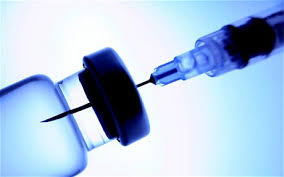Introduction.
Type 2 diabetes is not a single disease. It is multifactorial and the consequence of a breakdown of the normal metabolic controls of the body. It afflicts many organ systems including the micro-vessels of the eye, brain and central nervous system and the kidneys. The combination of the diabetic effect on blood sugar and the effects of the altered glucose metabolism on the microvessles of the body constitute a syndrome called ‘Metabolic Syndrome’
The countries of the GCC are all in the world’s top 15 countries for the incidence of this disease. The UAE has a very high incidence, and the Head of the Al Rashid Hospital has recent published figures stating that:
“….In the UAE, some 18.9 per cent of the population are living with diabetes, making it 11th worldwide in terms of diabetes prevalence according to the Diabetes Atlas of 2012 released last year by the International Diabetes Federation (IDF). Around the world, it is estimated that more than 371 million people have diabetes; half of them are undiagnosed according to IDF…..”
It is further recognised that for every patient with the overt disease, an equal number are incipient diabetics who are at risk of developing the disease. The UAE has the 2nd highest prevalence in the world with 18.9% of the UAE population having diabetes and another 18% at high risk of developing the disease.
A vision for Dubai.
Dubai has a very thriving health-care sector. Much of it dedicated to earning considerable revenue both from expatriates and also from locals. However the UAE and the Gulf states are poor contributors to Medical and Pharmaceutical Research and it is in developing innovative therapies and medicines that a true reputation is to be made. Otherwise one is merely a medical ‘shop’ serving wealthy shopkeepers.
The numbers of early Phase Clinical Trials by country/continent are to be found on the website www.clintrials.gov which is used as a universal reference for information about clinical trials.
It can be seen from the map that the Gulf States do not appear on this site – which is understandable.
It is possible however to actually look at the records of clinical trials in the neighbouring states from the data base on this site Table 1.
This of course is not inclusive of trials in the remainder of the world where individual countries may have early phase studies in the thousands. The contribution of the Gulf states in relation to the world is remarkably poor. Yet an examination of statistics (2002) for global incidence of diabetes shows the Gulf states to have the sad distinction of being the countries with the highest incidence of diabetes.
Table 1. Numbers of early Phase studies in the Gulf States and adjacent.
The published figures by the WHO for the incidence of diabetes in the Eastern Mediterranean region and the projections for the year 2030 make disturbing reading; figures double and treble. Table 2
But they also give an impression as to the ease with which a population of diabetics may be recruited for clinical trials.
|
In terms of world ranking, all the countries of the Gulf and of the region feature in those countries with the highest incidence of Type 2 diabetes. The countries are ranked by incidence and the percentage of the population with type 2 diabetes.
| Rank | Country | National % | Comparative %* |
| 1 | Nauru | 30.90% | 30.90% |
| 2 | United Arab Emirates | 12.20% | 18.70% |
| 3 | Saudi Arabia | 13.60% | 16.80% |
| 4 | Mauritius | 17.00% | 16.20% |
| 5 | Bahrain | 14.40% | 15.40% |
| 6 | Qatar | 13.30% | 15.40% |
| 7 | Reunion(c) | 16.10% | 15.30% |
| 8 | Kuwait | 10.80% | 14.60% |
| 9 | Seychelles(a,c) | 14.40% | 14.40% |
| 10 | Tuvalu(a) | 13.90% | 13.90% |
| 11 | French Polynesia | 13.50% | 13.80% |
| 12 | Oman | 11.10% | 13.40% |
| 13 | Tonga | 11.60% | 13.40% |
| 14 | Brunei Darussalam | 10.70% | 12.60% |
| 15 | French Guiana | 11.80% | 12.00% |
| 16 | Trinidad and Tobago | 11.40% | 11.70% |
| 17 | Malaysia | 10.90% | 11.60% |
| 18 | Dominica(a) | 11.50% | 11.50% |
| 19 | Netherlands Antilles | 14.00% | 11.50% |
| 20 | Egypt | 10.40% | 11.40% |
| 21 | Dominican Republic | 10.40% | 11.20% |
| 22 | Sri Lanka | 11.50% | 10.90% |
| 23 | Syrian Arab Republic | 8.30% | 10.80% |
It is lamentable that the contribution of the Gulf States to diabetic research is so understated especially when these same countries carry such a high burden of this disease and by virtue of this and their relative wealth they could be the global leaders in the search for therapies.

0 Comments